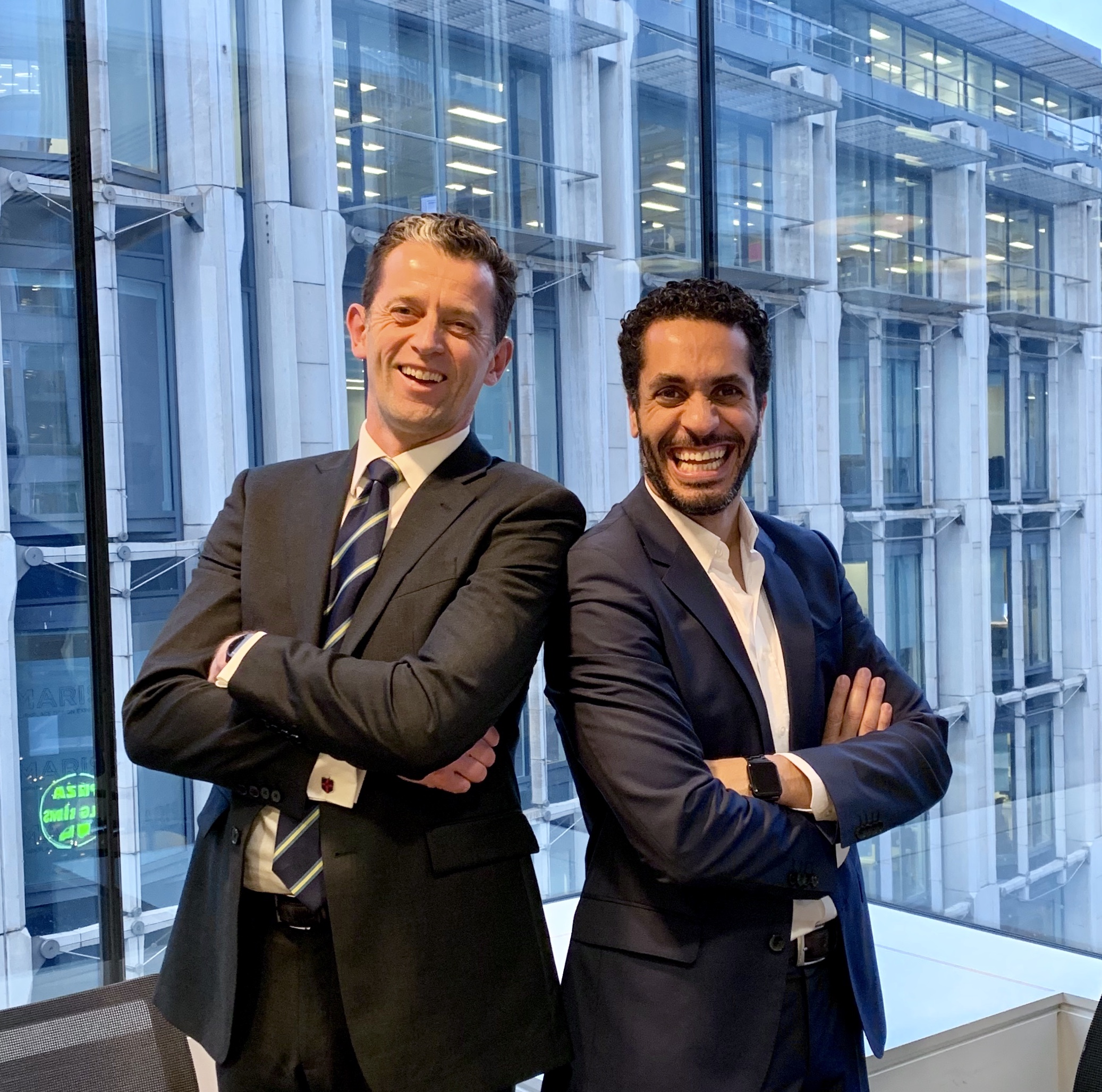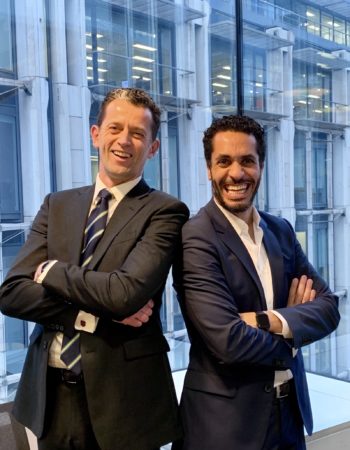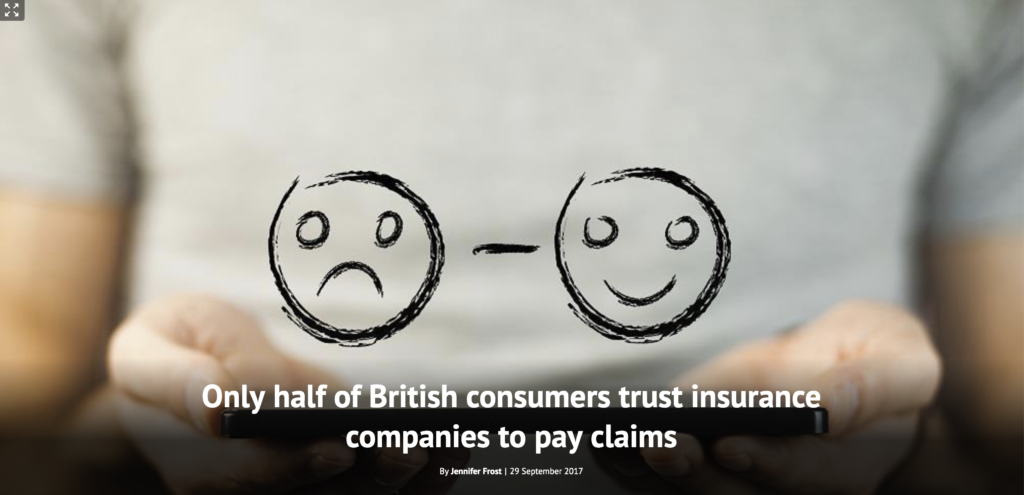
The word blockchain can create a whole range of emotions ranging from excitement to fear. In this podcast we had the pleasure to have Mark Simpson, Head of Consultancy at Armour Risk, take us through the Psychology of Blockchain.
What is blockchain?
Mark prefer to lift it to describe what Distributed Ledger Technology is (of which blockchain is a type of DLT)
Simply – Digital and decentralised books of record
A bit more complex – DLT is a database held and updated independently by each participant (or node) in a network – the distributed bit.
Updates to the ledger are independently constructed and recorded by each node.
The nodes then vote on these updates (different methods) to ensure that the majority agrees with the conclusion reached. This voting and agreement on one copy of the ledger is called consensus, and is conducted automatically by a consensus algorithm.
Once consensus has been reached, the distributed ledger updates itself and the latest, agreed-upon version of the ledger is saved on each node separately. The immutable bit.
The DLT attributes are
- Distributed
- Transparent & change evident
- Consensus driven
- Immutable record
- Tamper proof
- Cryptographically secure
In three words – Digitally Lifting Trust
Fear and DLT as a catalyst for change
In many ways DLT is like other forms of technology in that it is a catalyst for change, but as it challenges from more than a tech point of view it brings other challenges.
DLT challenges paradigms; values, identity and this can be tough.
According to Mark our view of the world and decision making is in fact distributed and doesn’t just occur in our head. As a coach one of the methods Mark has trained in was multiple intelligences (or mbraining for short).
Mbraining developed by Grant Soosalu & Marvin Oka used findings in Neuroscience that show we have three functioning brains in our head, heart and gut respectively. Using these findings as the basis for further behavioural modelling research, they unpacked some of the unconscious processes we use with our head, heart and gut.
It is a body of knowledge that has really helped from a change perspective and is being used in a framework Mark has developed called Resilient Changing.
Mark wrote an article on the topic of change a couple of years ago: https://www.linkedin.com/pulse/meeting-challenges-change-part-1-mark-simpson/
In summary we have
The head brain – highest expression – creativity
- Cognitive Perception- cognition, perception, pattern recognition, etc.
- Thinking – reasoning, abstraction, analysis, synthesis, meta-cognition etc.
- Making Meaning – semantic processing, language, narrative, metaphor, etc.s
The heart brain – highest expression is compassion
- Emoting– emotional processing (e.g. anger, grief, hatred, joy, happiness etc.)
- Values – processing what’s important to you and your priorities (and its relationship to the emotional strength of your aspirations, dreams, desires, etc.)
- Relational affect – your felt connection with others (e.g. feelings of love, hate, indifference, compassion, uncaring, like, dislike, etc.)
The gut brain – highest expression – Courage
- Core Identity – a deep and visceral sense of core self, and determining at the deepest levels what is ‘self’ versus ‘not-self’
- Self-preservation – protection of self, safety, boundaries, hungers and aversions
- Mobilisation – motility, impulse for action, gutsy courage and the will to act
Fear and blockchain
What is fear – An unpleasant emotion caused by the real or perceived threat of danger, pain, or harm?
What could this mean from a blockchain perspective?
Head brain
All this new terminology – I don’t understand it, or I don’t want to admit I don’t understand it – examples – DLT = Blockchain = Bitcoin = environmental damage, money laundering,
There is a lot of evidence that many people in organisation do not understand blockchain and its potential. It does take time to understand and as it is a nascent technology.
Examples of misunderstanding: DLT cannot not scale – performance is an issue. DLT will not work with GDPR to name a few.
Heart brain
Values: Trust and relationship are key – uberrimae fideis (utmost good faith) to act honestly and not mislead or withhold critical information from one another. The doctrine of utmost good faith applies to many everyday financial transactions and is one of the most fundamental doctrines in insurance law.
Now this isn’t suggesting people act dishonestly – but representations/interpretations of the world can differ.
Beliefs: Order – distributed technology and blockchain = disorder and chaos – we are regulated after all.
Example: It’s not safe, it can be hacked: we have seen all these bitcoin scams, people losing their money.
Gut Brain
“Identity and safety”
Blockchain will disintermediate me, when digitisation was brought into team X then y% were made redundant
Example: Change is risky, this is new technology and it has a high chance of failure – why be associated with failure
In a practical and business sense, particularly where change is involved we often hear the term “people are change resistant”, before assuming the problem lies with the resistor it may be an issue of communicating at the wrong level.
Letting go of control
When it comes to letting go, organisations and the individuals and that make up the organisation may find some challenges in letting go of control.
We have had for some time a fragmentation of control in respect of a number of areas – e.g. relationships– direct business, broker, business, and aggregation sites – now this can be further fragmented when we develop ecosystems which I’ll explain later.
Fear of what is being lost
This is an industry that rewards knowledge, people progress through knowledge and technical expertise – new ways of working can erode that information power and that body of tacit knowledge
Fear of failure – despite being in the risk industry – this is an industry that as “risk experts”, fears failure and does not deal with failure particularly well – failure is often punished.
Fear of what could be lost, rather than seeing things as what could be gained – we see this as organisations across any industry wrestle with dilemmas such as if, when to cannibalise their own business – SaaS vs on premise models for the enterprise software companies
Coupled with short-term thinking – average CEO tenure is 5 years, in UK Insurers it is on average 4.2 years. https://www.spencerstuart.com/research-and-insight/uk-insurance-ceo-route-to-the-top
This sets a tone, couple this with increased budgetary pressure and a need to execute and generate a return in even less time that before puts lots of pressure on the project portfolio.
DLT is competing with many other initiatives – RPA, IoT, AI, chatbots, etc., in Mark’s view its value comes when it is seen as an AND rather than OR choice, but the reality is lots of cost pressure.
When we add in short-term MBOs and linked remuneration the desire to be at the forefront of change can be really tested.
The challenge with DLT is that is a new paradigm, a disruptor or “Breakthrough innovations” to use other terms, – these typically require new and different business models to succeed. For example: Coopetition, greater sharing of information, smart contracts, new forms of underwriting – dynamic underwriting.
Some things that help
- Aware of the past, taking the strengths and explaining the differences
- For example if you have punished risk taking or “failure” in the past, you will need to explain and reinforce why will this time be different?
- Language can be key in setting a tone, it influences; even the term “fail-fast” has connotations – use terms like “experiment”, “scouting mission” rather than fail-fast or unsuccessful project.
For example the Amazon CEO Jeff Bezosencourages an “explorer mentality” rather than a “conqueror mentality” in his teams.
- Start small– define risk, problems, and budget – there are a few firms betting the house on blockchain, but they are not customers, they are software firms.
- Team structure and size –smaller teams, with greater autonomy and critically support can move quicker, but again be mindful of team members past; it can take more than telling them. A bit like when an animal is first released back into the wild, it may run back to its cage and ways of operating, we humans can be the same
- Focus on the learning-mindset– seeing and critically using it as learning – sharing the knowledge inside and even outside the organisation.
- Think about the team– with this type of innovation and to borrow from design thinking there is a need to be comfortable with the chaos – but also with focus and an eye on the goal and a certain degree of discipline, not to be confused with being rigid or lacking innovative spirit.
Embracing trust
Now trust has many connotations, the trust in the new paradigm/technology, trust in the ability to make change,
Lets start with the basis of trust.
Insurance is founded on the bedrock of trust.
A nice article from the CII in Jan 2018. Public Trust in Insurance
(https://www.cii.co.uk/media/9224251/academic-brief-public-trust-in-insurance.pdf)
When we trust, we expect both competence and basic good will, since neither alone will get the job done.
A claims comparison study of British consumers back in 2017 showed that only half trust insurance companies to pay claims
Source Insurance Times: https://www.insurancetimes.co.uk/only-half-of-british-consumers-trust-insurance-companies-to-pay-claims/1425151.article#commentsJump
We see a root cause of the trust issue being around information asymmetry, this usually takes two forms:
- Adverse or advantageous selection – when somebody has asymmetric information before a transaction and uses it to their advantage.
- Moral hazard – when one party in a transaction has asymmetric information after the transaction has been completed e.g. the insured gives a lower standard of care to their phone when it is insured vs when it is not.
Whilst companies espouse that they work in a trust business and way, there is strong evidence that this trust is qualified – look at the spend on lawyers and processes to handle the level of information asymmetry and let’s face it distrust – do my records agree with their records.
Blockchain in narrowing the information asymmetry, and if coupled with some other technologies such as AI, IoT can really start to lower the cost of verification, this again isn’t to necessarily disintermediate certain parties, and indeed the shape of verifiers may change
A lot of change in the insurance industry is being driven by the customers:
- The increased demands,sophistication and action – insurance is one facet of what companies do, other industries are innovating using blockchain in areas such as oil and gas, supply chain, pharma, health – they will expect insurers to at least keep up.
- The great untapped market– aka protection gap – The Geneva association describe the levels of unprotected and its staggering– Munich Re and Nat Cat Cover – only 30 per cent of catastrophe losses insured. Swiss Re projects the future protection gap at more than USD 150 billion p.a. or about 0.25 per cent of global GDP – so huge growth potential
- There are also financial pressures– the lack of strong investment returns, strong pressure on costs but a shareholder demand to maintain earnings – so there is a need for smarter underwriting and more efficient business generating better returns
- Strong investment signs – What we are seeing is a new wave of technological opportunity and investment in what Insureblocks refers as the new stack – e.g. DLT, AI, Chatbots, IoT, RPA, 3D printing, etc.
Now it would be easy to pitch this as a choice, DLT vs X, vs Y but for Mark the real gain comes when we combine the technologies, but that can bring a greater perceived risk, and we still have the budgetary pressures and need to demonstrate results – so starting with something specific, starting small, showing progress and gaining trust works.
- Also regulation
We are also likely to see Open Banking paving the way for open insurance.
A world where customers demand more control over their data and information, if I can share my financial transaction history, why shouldn’t I be able to share my driver behaviour data collected in my car’s black box with other insurers?
If new laws were introduced requiring data held by insurers to be available via open APIs, how would the market respond? A move of this nature would most certainly make the market a more competitive environment than ever before, but where threats arise, as do opportunities.
This is certainly an area where blockchain can digitally lift trust and the sharing of information.
Working within an ecosystem
Ecosystems can have a range of meanings, for Mark an ecosystem is in the vein of coopetition, or at least an environment that supports a network with collaboration and competition.
McKinsey defines anecosystem as an interconnected set of services that allows users to fulfil a variety of needs in one integrated experience.
McKinsey estimate ecosystems will account for 30 percent of global revenues by 2025.
Ecosystem presents great opportunities and is a definite advantage over the pure product, platform play.
- Gateways, reducing frictionallowing as customers navigate related services.
- Network effectsand maximise the information value for all parties.
- Data integrationacross a series of services to complement and enhance customers
Networks depend on participants so really can be a race for scale and scope – i.e. all the value chain actors are present from client to capital and there are enough of them to make transactions worthwhile.
The London Market for example has a rich history of market initiatives and there have been successes, but there have been many that have ground to a halt.
Governance
So if we assume the purpose being to facilitate effective, entrepreneurial and prudent management that can deliver the long-term success of the ecosystem then it is about structure, beliefs and behaviour.
It’s hard to argue against the importance of governance.
We’ve seen in the last months that many platform, network operators are really taking this seriously.
R3 made a statement on the governance model back in October 18 with the foundation, and the desire to be transparent and governed by the network users. They have a clear mission, values and structure, conditions of board participation, promoting diversity and representation of the network – all good stuff. See the Insureblocks podcast on governance on the Corda Network.
In ChainThat’s Bermudian insurance and reinsurance risk and capital exchange, David Edwards talks of various governance models and the desire for the network to decide on the model – again all good stuff.
On top of this it is the importance of how things are governed as much as what. How people behave on the network – ideally united under a common cause, with some shared beliefs and minimum behaviours – so flexibility with responsibility.
People, process and tech
So we’ve covered a lot of the challenges already, but a few more thoughts on what it means for change.
People
One the key aspects to this change is the way we approach change, – taking an outside in and inside out view, what works well currently in our industry or outside it.
Mark find it is critical to support the team in their journey to innovation – in his change experience he often find the HR team, change management teams are the ones that need support first before they go and help the rest of the company, they also need support throughout the process, it’s not a one-off and it’s draining. If they are not equipped; it’s almost akin to putting a drunk behind the wheel of change.
Process
We are starting to see the emergence of design strategy and design thinking being used in a change environment. With a more agile approach to change, almost MVC approaches – minimum viable change to test.
Mark passionately believe in the need for human centred change is with and for people, rather than change that is “done to people”.
Mark is collaborating at present on a framework that combines the best of agile, person centric, design thinking, multiple intelligences and resilience to deliver more effective change and greater self-sufficiency – and this not about a new change method, I’ve already catalogued over 50. (https://www.slideshare.net/MarkSimpson13/taxonomy-of-change-models-version-30-july-2017) So it can work with what you have.
Tech
From a tech point of view it’s valuable to harness the tools that promote collaboration, communication, structure and serendipitous interaction and like DLT – experiment with different tools and tech and review its continued effectiveness.
Your Turn
Thank you Mark for sharing your views on the psychology of blockchain. If you liked this episode, please do review it on iTunes. If you have any comments or suggestions on how we could improve, please don’t hesitate to add a comment below. If you’d like to ask Mark a question, feel free to add a comment below and we’ll get him over to our site to answer your questions.






